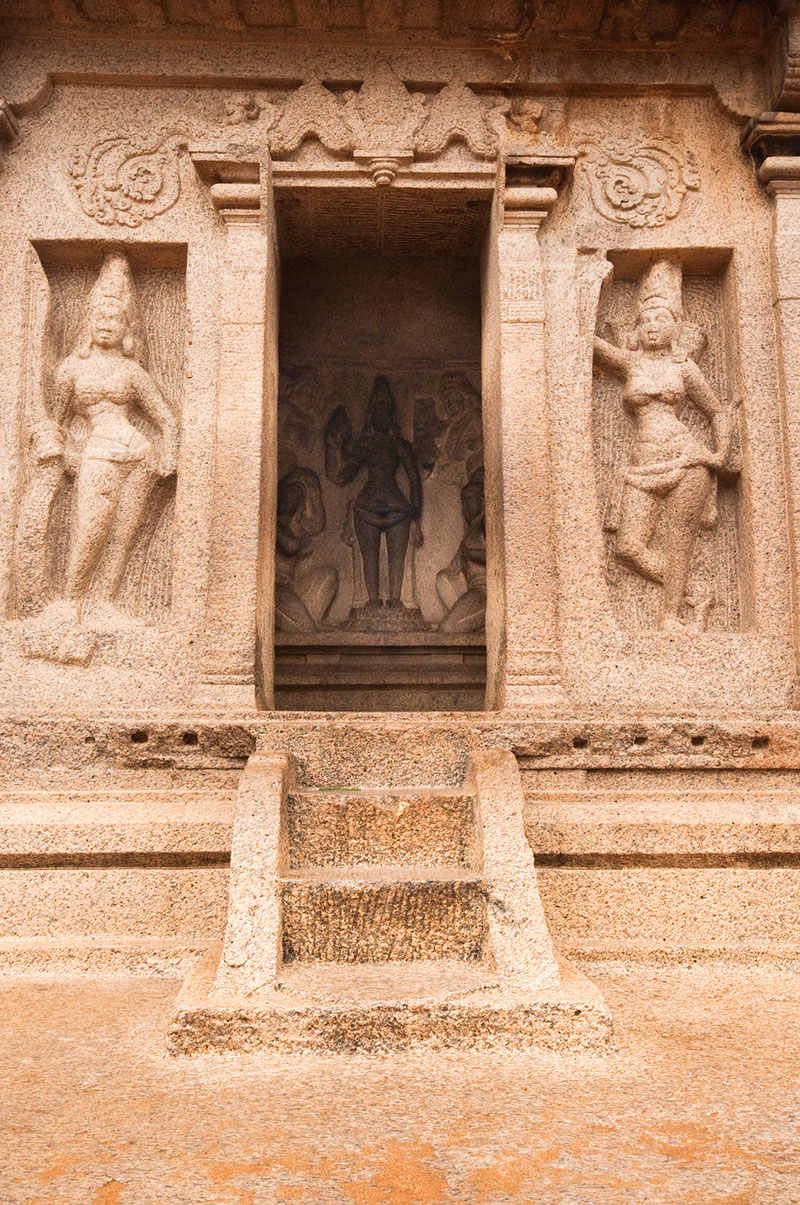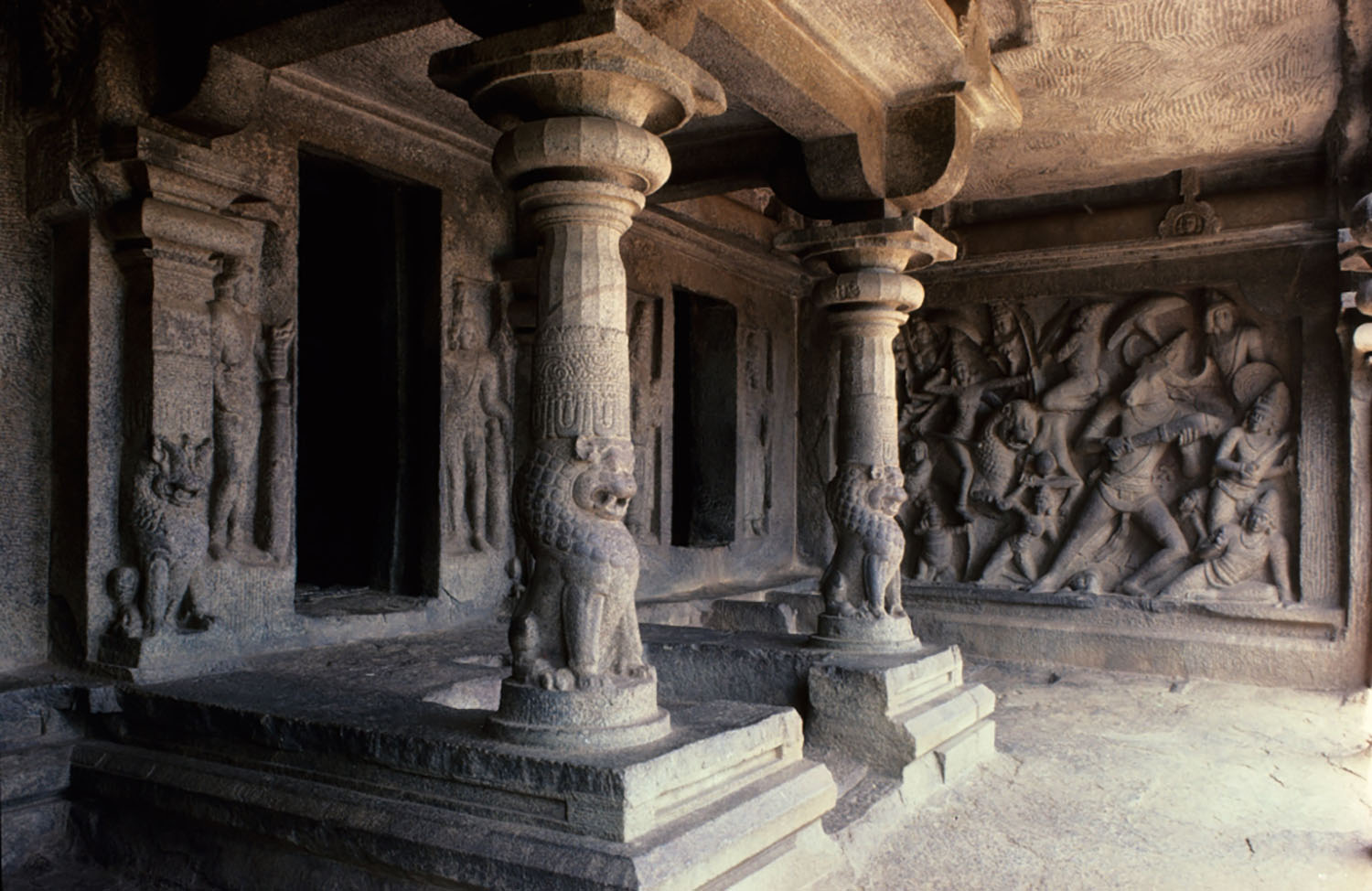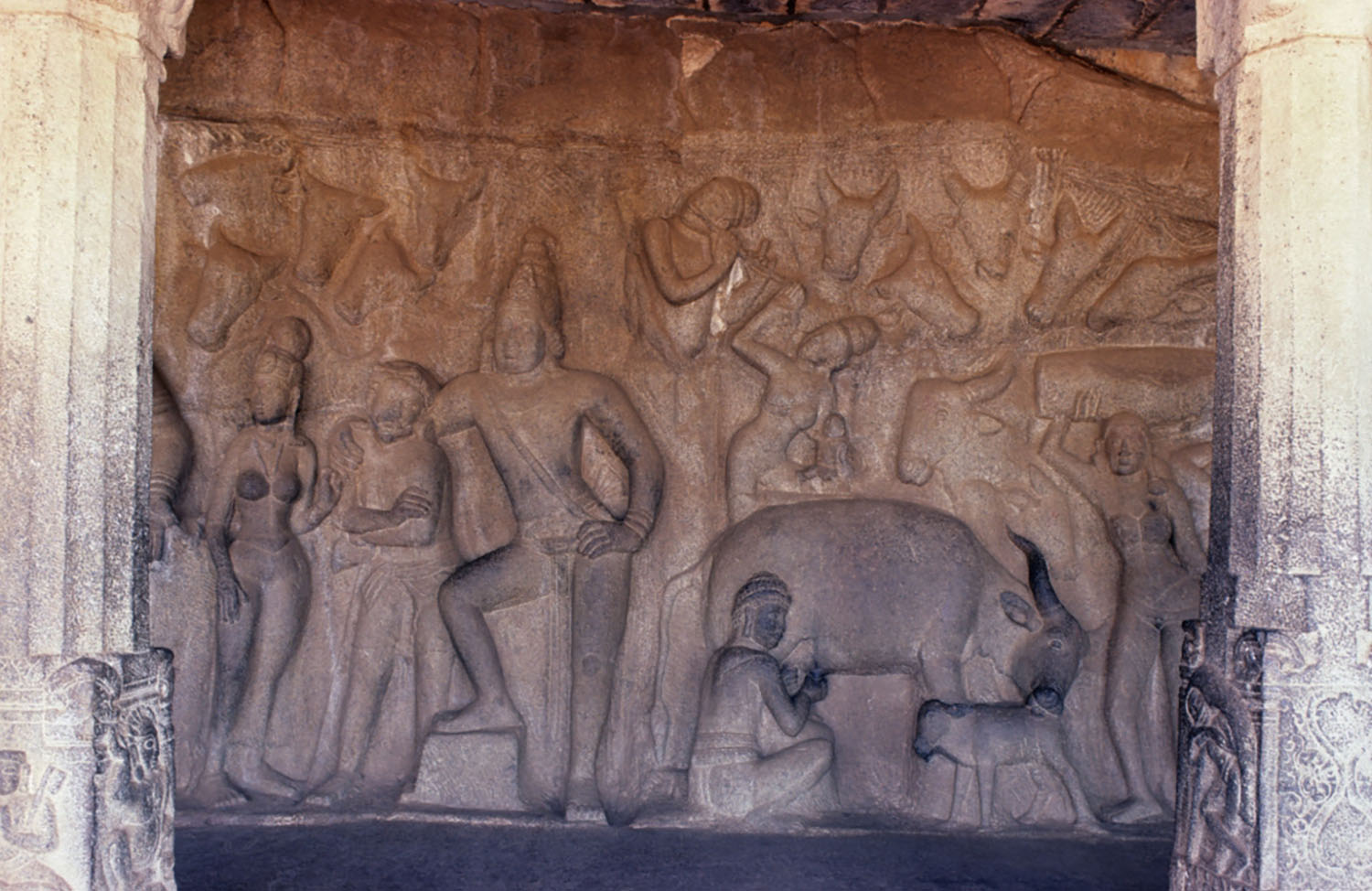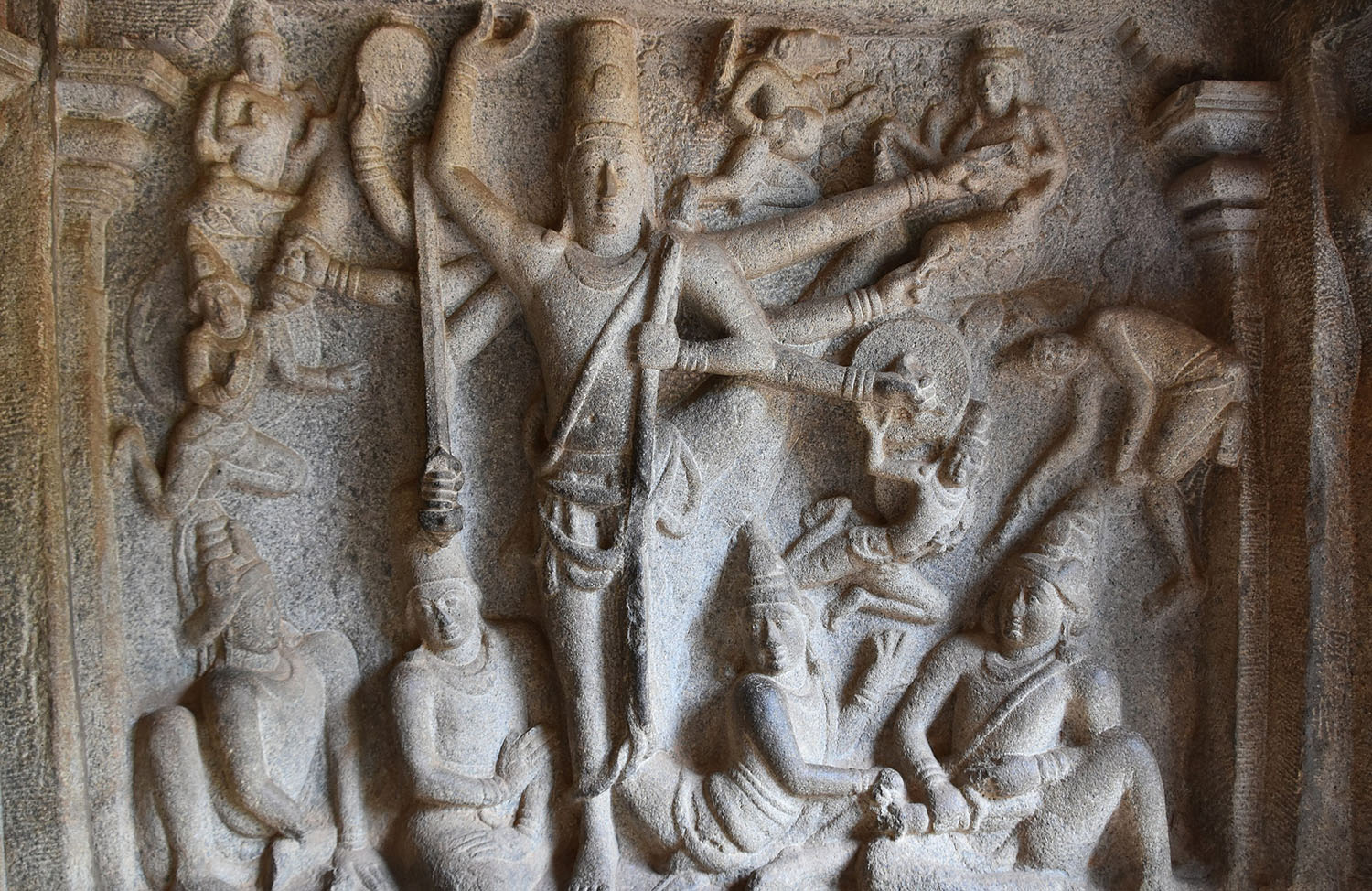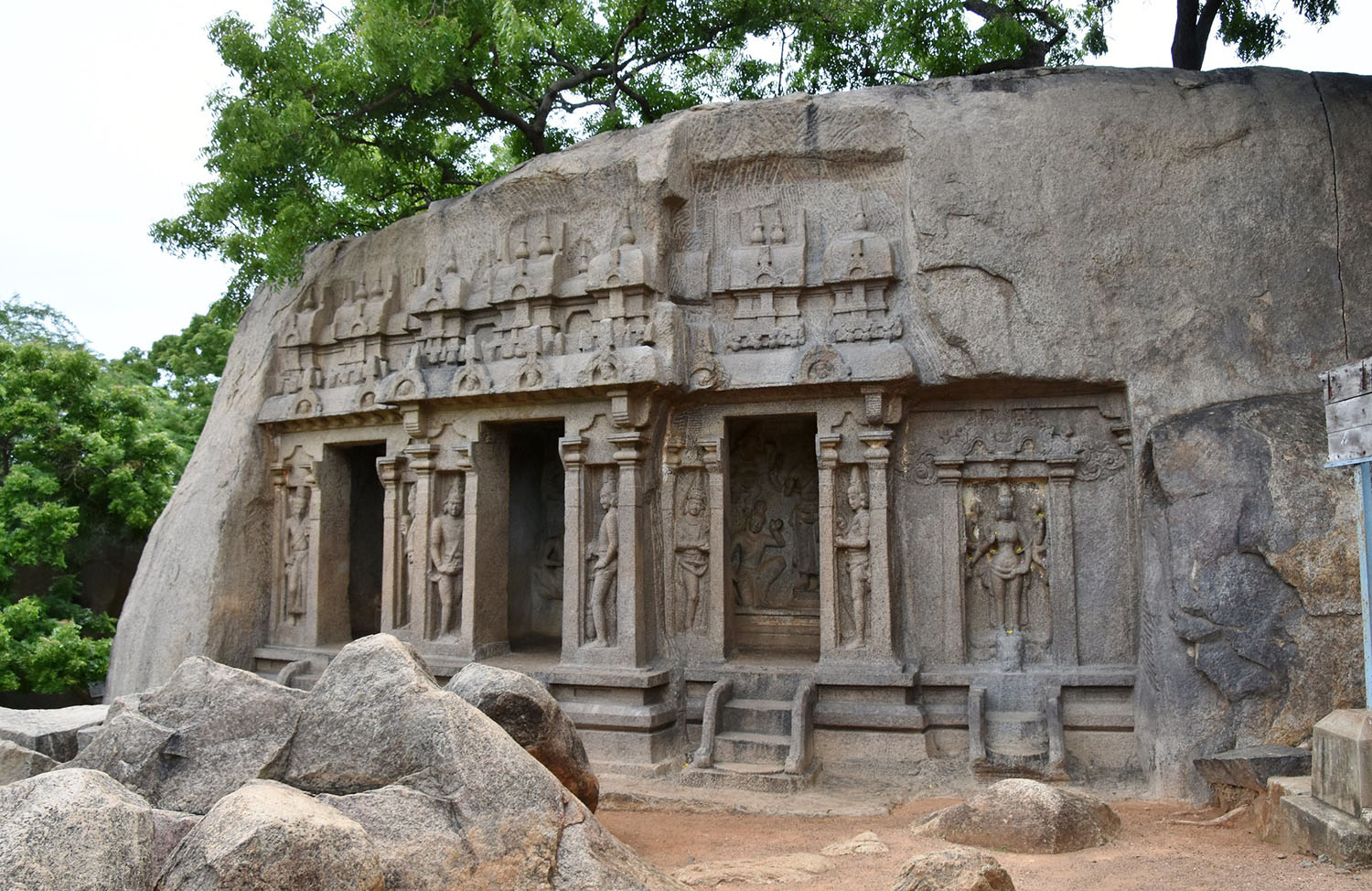A historical site in Chengalpattu district, Tamil Nadu on the Coromandel coast comprising monuments, caves, sculptures and temples, Mamallapuram – now known as Mahabalipuram – was a major port city of the Pallava Dynasty from the sixth to ninth century CE. The city was named after emperor Narasimhavarman I, also known as Mamalla, who expanded the Pallava Empire to the western Deccan and funded artistic projects at Mamallapuram. A busy Indian Ocean port city well before and after Pallava rule, Mamallapuram was also referred to as the “Land of Seven Pagodas” by European sailors. Most of the art and architecture of Mamallapuram was made from the early seventh to eighth centuries with the patronage of Pallava kings Mahendravarman I, Narasimhavarman I and Narasimhavarman II, also known as Rajasimha. The surviving art in Mahabalipuram includes high to bas relief sculptures, structural and cave temples, monoliths known as rathas, and inde sculptures carved on rock-cut surfaces and boulders.
When Mamallapuram was still a new town in the seventh century, the period following the Narasimhavarman I’s victory over the Chalukyas saw the completion of Mahendravarman’s projects, as well as a large number of structures being carved from the granite boulders and caves in the area, all of which were in some way designed to memorialise the victory. Stylistically, these early rock reliefs of Mamallapuram are rougher and more rigid than those of caves in western India and the Deccan. This is partly due to the lack of specialised craftsmen for rock-cut sculpture in the region at the time, and partly a result of the difficulty in carving the hard granite native to Mamallapuram.
The sculptures are known for their lively and naturalistic postures. The figures are characterised by wide foreheads, sharp noses, long eyes, hanging ears, oval or long faces with a double chin and slender and curvaceous bodies with rounded limbs. They are typically adorned in heavy drapery and minimal ornaments – including weapons, chest jewellery and an occasional traditional thread worn across the upper bodies of the male figures. Lower garments are secured by a waistband and a cummerbund. The upper garments of male figures are folded and draped over the left shoulder while female sculptures are shown wearing a breast band.
The existing sculptures show the influence of early Buddhist traditions of Satavahanas and Iksvaku from regions in and around Andhra Pradesh. Most of the sculptures, barring a few royal portraits, represent narratives from the Puranas or epics like the Mahabharata. Deities are easily recognisable from their static poses, frontal alignment and the abhaya mudra; they are also sometimes shown surrounded by worshippers. The most prominent example of open air relief sculpture in Mamallapuram is Arjuna’s Penance, also known as the Descent of the Ganga, which contains numerous images of humans, deities and animals. It is also a prime example of an approach called samdhanakavya, or simultaneous narrative, which is presented in such a way as to be interpreted as a depiction of more than one story. The Krishna mandapa is another open air relief, although unlike Arjuna’s Penance it shows everyday scenes of pastoral life.
Mamallapuram architecture is considered to provide the earliest evidence of gopuram-like structures, dvarapalas, somaskanda and slender pillars with lion and yali iconography.
The Varaha Mandapa cave displays typical features of this architectural style, in addition to sculpted reliefs depicting deities as well as the achievements of the patron monarch. The Trimurti cave features Shiva as a central figure, flanked by Brahma on the left and Vishnu on the right. There is also an individual cell to the right of the main façade with an image of Durga in a frontal standing position with eight hands on the buffalo head of Mahisha — a recurring image in Pallava art. Similar rock-cut images of Durga are also seen in the Mahishasurmardini cave, where Durga is depicted on her vahana, a lion, attacking Mahisha, who is in human form with the head of a buffalo. This panel is significant due to its naturalistic depiction and non-hierarchical scaling; unlike other Durga iconography, the goddess is not as large as her opponent Mahisha, and the figures look animated and life-like. The Tiger cave, located a few kilometres away from the main cluster of monuments, is an open-air amphitheatre-like structure carved on a flat rock and attributed to the reign of Narasimhavarman II. It is known for its yali iconography, with almost eleven yali sculptures forming an arch over the chamber. The Shore temple was constructed under Narasimhaverman II and characterises the later periods of Pallava architecture, which primarily took the form of structural buildings.




